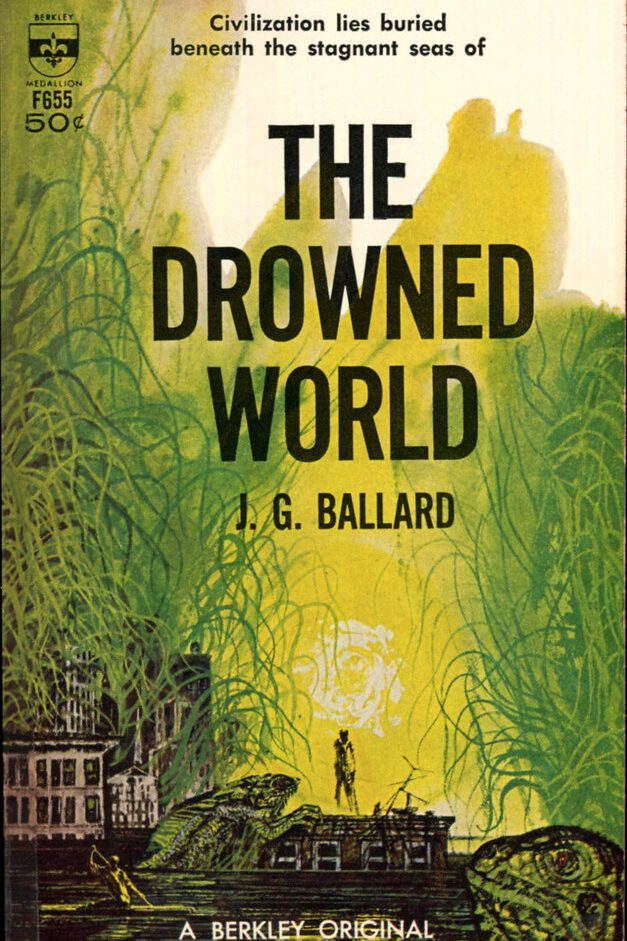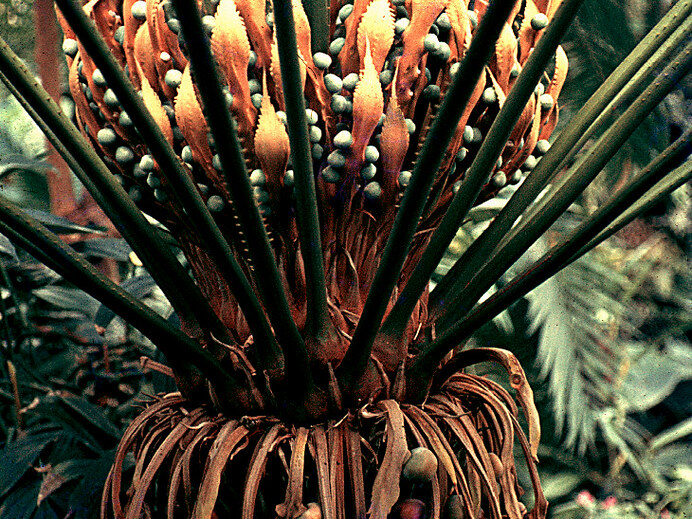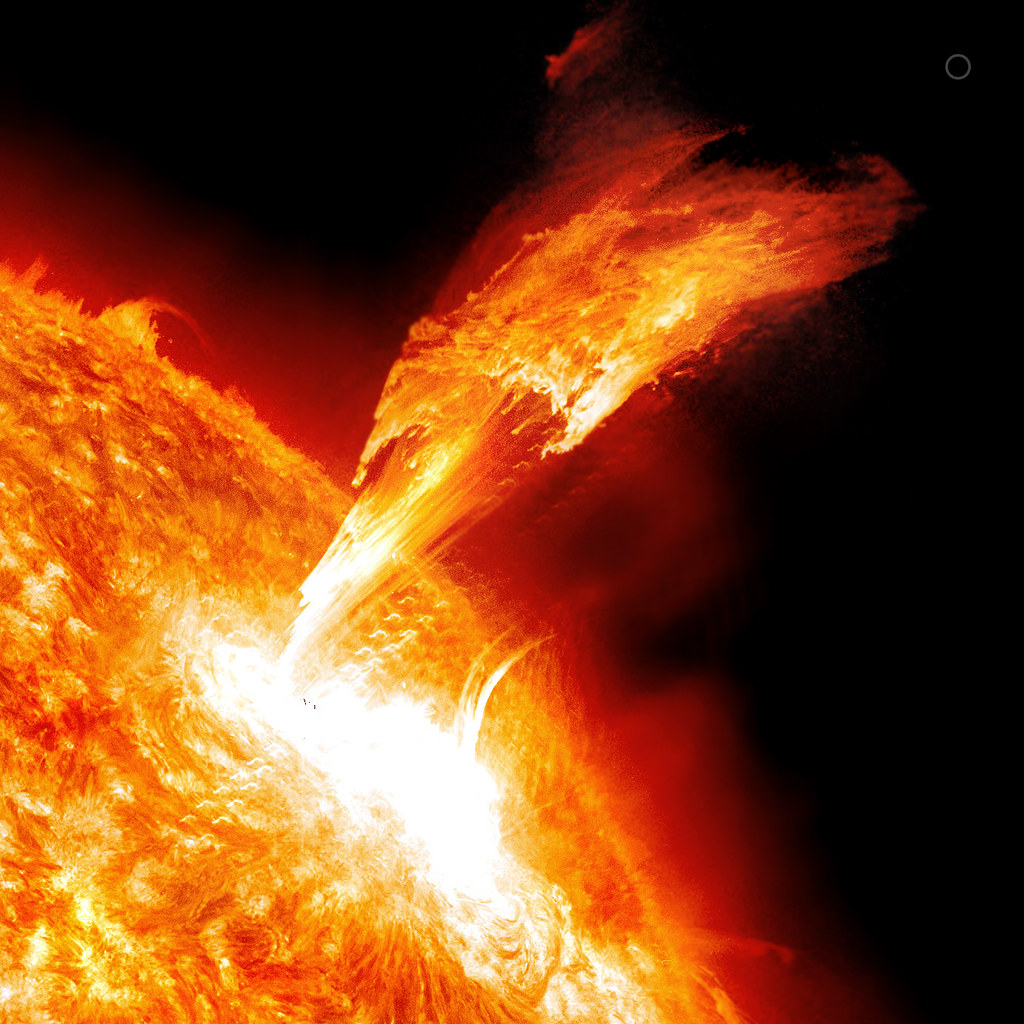
Known for his novels Empire of the Sun and Crash, which have been highlighted by popular film adaptions, J.G. Ballard’s earlier experiments with apocalyptic science fiction often get lost in the shuffle. The first of these, The Drowned World, speculates on how humans might, or might not, adapt to a world-wide climate crisis that all but wipes out civilization. To breathe life into this broiling, flooded vision of the future, Ballard employs richly colorful descriptions and brief but dense histories.
Tropical Color
The main foundation of Ballard’s world-building is the mosaic of vivid images interspersed throughout the novel. For example, one of the earlier descriptions of the lagoon that used to be a high-end London block reads:

In the early morning light a strange mournful beauty hung over the lagoon; the somber green-black fronds of the gymnosperms, intruders from the Triassic past, and the half-submerged white-faced buildings of the 20th century still reflected together in the dark mirror of the water, the two interlocking worlds apparently suspended at some junction in time.
J. G. Ballard, The Drowned World, pp. 21
The use of “gymnosperms,” the group of plants that includes pine trees and conifers, brings not only specificity to the description, but also brings the voice of the protagonist, a biologist, into the passage. It’s also interesting to note that if you look at it’s etymological roots, it means “naked seed,” adding on to the feeling of nature unleashed, an idea catalyzed by the use of “Triassic.” “Triassic” evokes images of ancient, untouched jungles and vicious dinosaurs (although more so for modern audiences thanks to one Ballard’s contemporaries/successors, Michael Crichton). All of this, reinforced by a melancholic tone, culminates with the meeting of the rising ancient and the deteriorating modern.
Bite-Sized History

Ballard’s second method of world-building is rapid flashes of exposition; just enough to give the present foundation, but not enough to pull away from the present. While there are small references towards humanity’s fate, the bulk of contextualization isn’t done until a small section of the second chapter, which summarizes the ecological disaster and the subsequent polar migration of the little that was left of humanity. While it deals with the last 70 years of human history briefly, it is full of hind-sight detail and scientific jargon. One passage reads:
A series of violent and prolonged solar storms lasting several years caused by a sudden instability in the Sun had enlarged the Van Allen belts and diminished the Earth’s gravitational hold upon the outer layers of the ionosphere
J. G. Ballard, The Drowned World, p. 33
Not being a scientist myself, I can’t speak to the actual accuracy of Ballard’s envisioned disaster, but as an average reader, language like “Van Allen Belts” and “Ionosphere” (which I can at least confirm are real scientific phenomena) adds a layer of reality to the context, that this could actually happen. Passages like this not only convey context quickly, but also illustrate Kerans’s (the biologist protagonist) voice and perspective, not to mention his increasingly distant relationship with past humanity.
Worth Remembering

While the Science Fiction of the 60’s may deserve in some part its less-than-glamorous reputation (even in The Drowned World, the only female character only wears bikinis and ball gowns), that should not diminish the careful craftsmanship that went into many of these novels. With sharp description and careful context, Ballard builds a fully-realized world that gives him the perfect playground to meditate on how we might evolve or devolve in the face of disaster. Even when content feels dated or falls short of modern expectations, expert writing is worth preserving, especially with the solar storm of AI on the horizon.